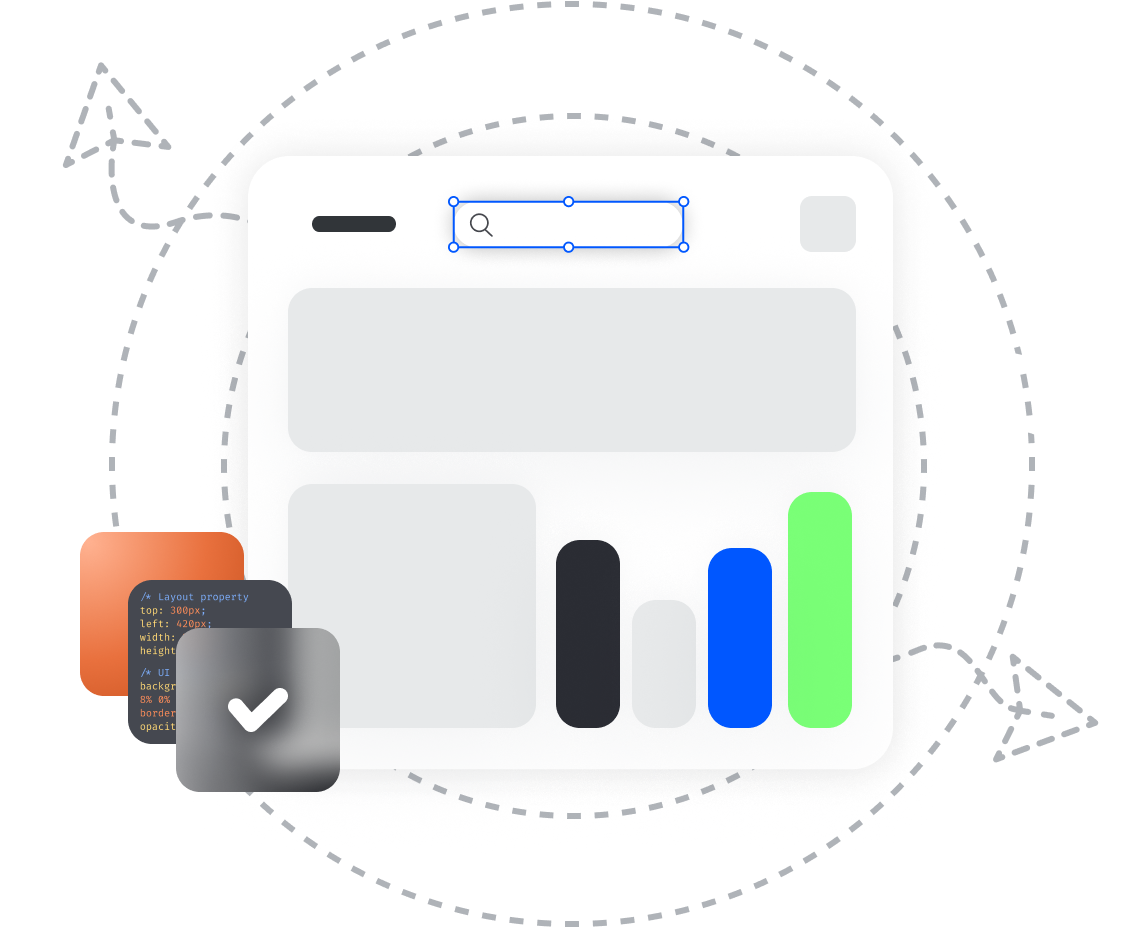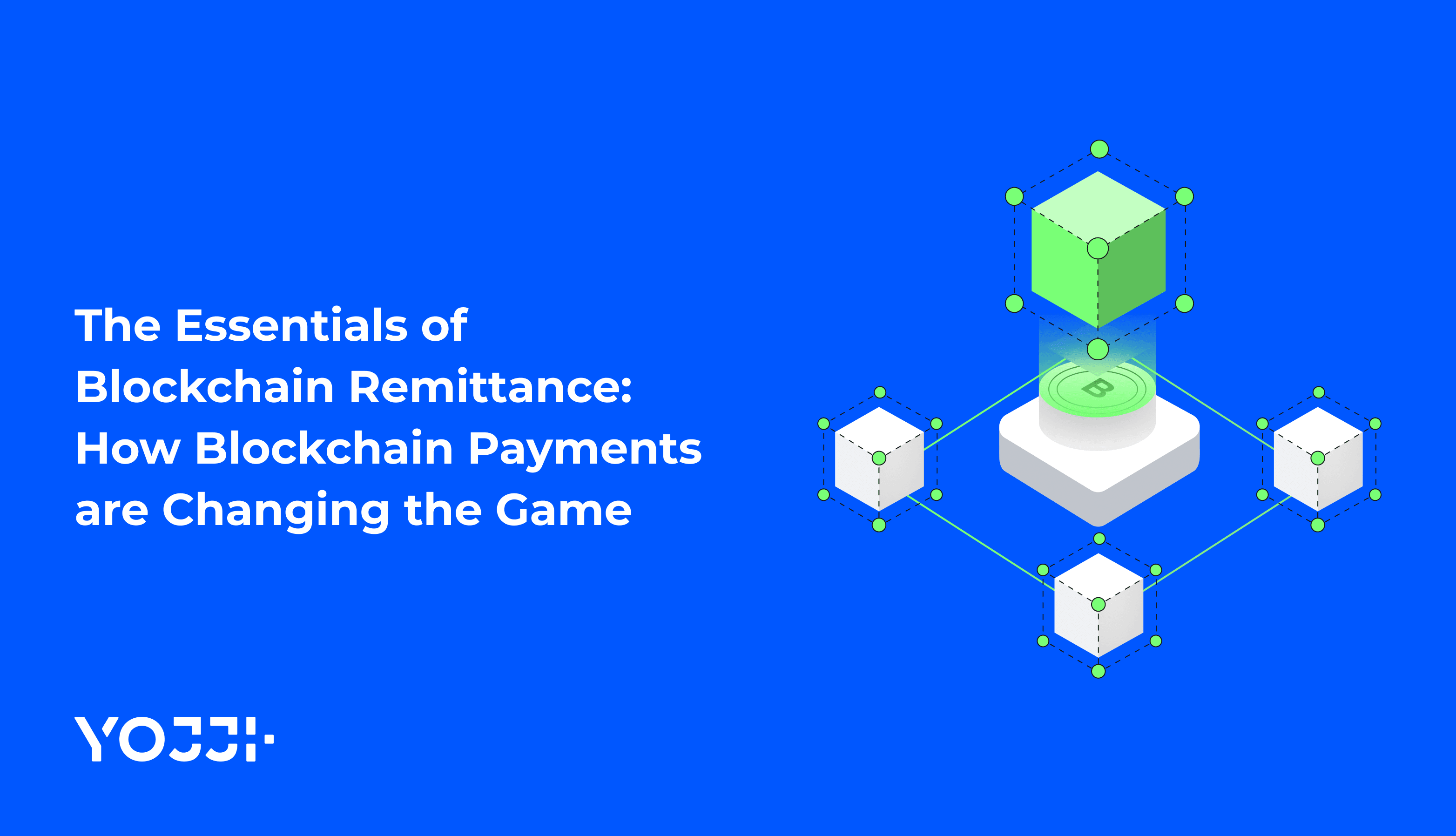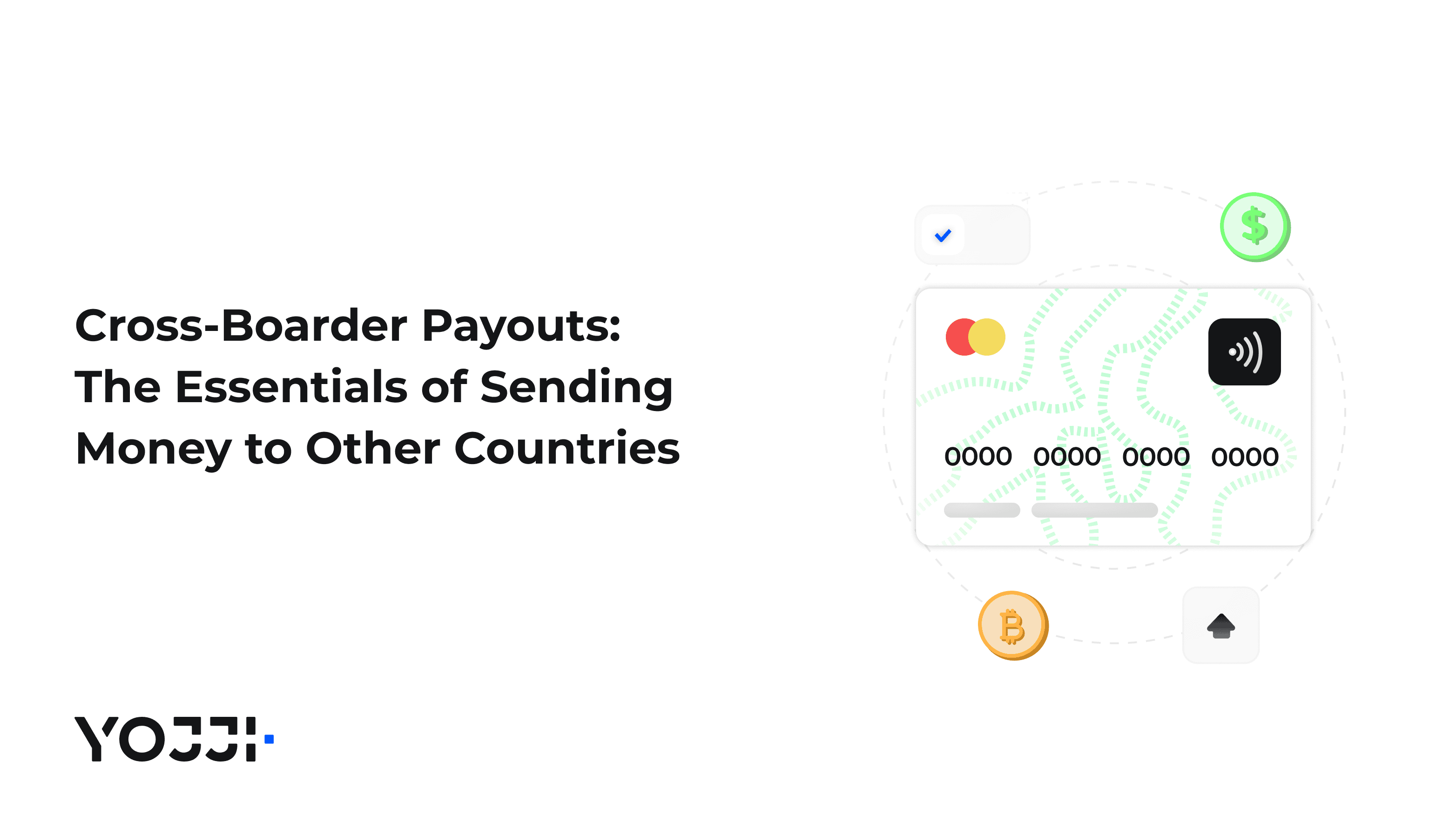The Essentials of Blockchain Remittance: How Blockchain Payments are Changing the Game

Introduction
Many people are still skeptical about blockchain, especially when it comes to transferring money over borders, but in vain. It’s a fast, safe, and easy way that help individuals support their families abroad and conduct financial transfers for business operations. Data shows that by the end of May 2024, there will be well over a million daily on-chain transactions for the Ethereum cryptocurrency. This means that blockchain remittance is gaining momentum. Keep reading the article to learn more about blockchain money transfers, and how it’s been connecting the financial world.
What is Blockchain and How Does It Power Cryptocurrency?
At its very basic level, a blockchain is no more than a computerized ledger. It's a high-tech notebook with transactions that are transparent, secure, and virtually tamper-proof. To break it down even further: it's a list of digital blocks linked together in such a way that one block holds many transactions, which are sealed by a cryptographic lock when filled. It's the architecture in which no one can travel back in time and rewrite history, hence making blockchain the bedrock of trust in the digital world.
It is the blockchain that gives cryptocurrency its power. It's the backbone, the infrastructure that makes this whole idea of digital decentralized money work. Unlike conventional banking systems, where everything rests on intermediaries like banks or even processing units, blockchain does not need a middleman. Instead, verification and recording of transactions are performed via a network of computers, often referred to as nodes. This whole process accelerates on a peer-to-peer basis and cuts down costs considerably. This is why cryptocurrencies are so popular these days.
To put this in perspective, the Bitcoin blockchain, invented in 2009, settles approximately 600,000 transactions a day. Other blockchains, like Ethereum, have expanded on the original Bitcoin concept to include "smart contracts". These are automatically executed agreements or rules encoded into the blockchain. Because of its adaptability, blockchain is now a powerful tool for a wide range of applications, including supply chain management and healthcare, besides money transfers.
Blockchain is like going from a clogged freeway to a clear express lane; it changes the regulations in the financial industry. At Yojji, we think that this technology is both the future and the present, presenting options that were unthinkable only a short time ago. The finest aspect? We have only just begun.
Perhaps one of the highlights of blockchain is decentralization. There is essentially no controlling network that owns it, and nobody can shut it down. From an almost absolute perspective, there is no single point of failure in financial transfers, for instance, that is susceptible to fraud, data breaches, or even geopolitical disputes. All blockchain transactions, by the nature of their security protocols like cryptographic hashing and consensus mechanisms, are tamper-proof and transparent. These two qualities are sorely needed in today's global economy.
In other words, blockchain is not just a buzzword. It is an engine for the so-called revolution in cryptocurrency. Blockchain provides secure, efficient, and transparent ways to handle digital transactions. And, dare we say it, it rewrote the rulebook on money transfers and reshaped our idea about trust in finance. After all, who wouldn't want a system where the journey of each and every penny shines as bright as daylight?
The Key Benefits of Blockchain in Money Transfers
Blockchain revolutionizes money transfers by solving some of the old problems that always outran traditional systems. Imagine sending money across the globe as easily and cheaply as sending an email. That's what blockchain promises to bring to the table.

1. Speed: No More Waiting
Traditional cross-border payments can take up to days to process, especially when there are many middlemen. Blockchain removes these middlemen, allowing the transactions to be settled in minutes or even seconds. Take Ripple's blockchain technology; near-instant transfers are made possible compared to the SWIFT transactions that usually take 2-5 business days. After all, time is money, and blockchain knows this.
2. Lower Costs: Cutting Out the Middleman
Banks and payment processors charge as much as 10% in fees on the amount transferred for international transfers. Blockchain greatly reduces such costs by eliminating middlemen and simplifying the process. Transfers of money with Bitcoin or Ethereum could, for instance, cost merely a fraction of more traditional fees, even with large sums. It is like changing to a free-flowing express lane from a highway full of tolls.

3. Improved Security: Tamper-Proof Transactions
By its very nature, fraud is all but impossible on Blockchain. Every transaction is encrypted, time-stamped, and recorded on a decentralized ledger in a manner that, once the records are added, no one can change. This level of security is akin to having a digital vault with a lock that is completely transparent and impossible to break. It is super useful for senders and receivers alike.
4. Transparency: A Clear View of Every Dollar
Everything on the blockchain is visible to all its participants — a scheme as clear as clean glass. Such openness makes for especially valuable trust in industries like remittances or donations of all kinds, where accountability is paramount. For example, donors can trace what happens with their money without third-party audits.
5. Accessibility: Empowering the Unbanked
An estimated 1.4 billion adults lack access to basic banking services worldwide. Blockchain and cryptocurrencies turn this on their head by making anyone with an internet connection capable of sending and receiving money. This has proved transformative in regions such as Africa, where blockchain-based platforms like BitPesa have opened up financial opportunities to millions.
6. Resilience: Always Online, Always Reliable
Unlike banks, which follow business hours, holidays, or technical outages, blockchain always does its thing 24/7. It is always up and running so you can transfer money at any time, without having to wait until Monday again to have your money processed.
Real-World Use Cases: Blockchain in Action for Global Remittances
Blockchain is not a concept of the future. It is an immediate reality that's altering how cash moves across borders. From cost cuts in remittances to giving a voice to the unrepresented community, blockchain is the MVP for cross-border money transfers.

1. Reduction of Costs in Cross-Border Remittances
For millions of migrant workers, sending money home used to be a costly affair. According to the World Bank, traditional remittance services, such as Western Union or MoneyGram, often charge fees over 7% of the amount transferred. Using blockchain-based solutions like RippleNet or Stellar, this has been cut by as much as 1%. By removing intermediaries, these platforms allow more money to reach families, fuel local economies, and provide a better life.
2. Speed Up Transfers to Lightning Speed
Each moment counts when one is transferring money meant for emergency use or is time-sensitive. Thanks to blockchain, one will never have to wait 3-5 business days for any particular transaction to clear. In services like BitPesa from Africa, users can send money internationally in minutes, not days. This leverages real-time settlement capabilities thanks to blockchain. That's like turning the sluggish mail service into email for money.
3. Financial Inclusion of the Unbanked
A large portion of the world's population is still beyond the reach of conventional systems of finance and security. However, blockchain has bridged that gap through decentralized solutions independent of banks or intermediaries. Celo and Coins.ph are giving the ability to serve one's needs with ease. They can let people send, receive, or store money securely with just a smartphone. In areas like Southeast Asia and sub-Saharan Africa, where access to bank branches is sparse but mobile devices are everywhere, these solutions are opening up financial possibilities and connecting millions to the global economy.
4. Transparent Aid Distribution
Corruption or inefficiency often hinders aid from reaching those in need when disaster strikes. Blockchain makes charitable donations and humanitarian aid transparent. For example, the World Food Programme initiative of Building Blocks deploys blockchain to distribute funds securely and efficiently to refugees. All the money goes directly to beneficiaries, with no middlemen taking a cut.
5. Enabling Seamless B2B Transactions
While it's for people, blockchain is equally modernizing business remittances. Many platforms, including RippleNet, are being implemented across the world by financial institutions to provide businesses with high-value, cross-border payments. Santander uses Ripple's blockchain to provide same-day international transfers to corporate customers, saving time and reducing labor costs of operations.
6. Stablecoins: The Savior from Volatility
For many, the volatility of the cryptocurrency markets was a non-negotiable issue. Insert stablecoin, pegged to fiat currencies like USD, and thus consistently valued. Platforms centered on stablecoin, like USDC by Circle, have now become a popular platform for international money transfers, combining blockchain’s benefits with stability.
Challenges Facing Blockchain and Cryptocurrency in Money Transfers
Blockchain and cryptocurrency have transformative potential concerning money transfers. However, significant challenges still exist that need to be overcome before mainstream adoption can be fully realized. There are a variety of obstacles, including regulatory uncertainty and technical limitations, that dot the path toward changing financial systems.

1. Regulatory Uncertainty: A Patchwork of Rules All over the world, governments continue to grapple with the best way to regulate blockchain and cryptocurrency. Inconsistent global regulation creates confusion among businesses and users. For instance, while countries such as El Salvador embraced Bitcoin as legal tender, others have issued outright bans, like China. This fragmented environment, in return, develops into a compliance challenge that is very difficult for companies operating across borders.
2. Volatility: The Crypto Rollercoaster Cryptocurrencies like Bitcoin and Ethereum are renowned for their price fluctuations. A $500 transfer today can shrink or balloon in value in just hours. So far, stablecoins have solved this problem, but they depend on fiat collateral, which adds to its complications. Stability is one of the key challenges for money transfers to become predictable.
3. Scalability: When Demand Overwhelms Supply Most blockchain networks struggle to efficiently process large volumes of transactions. For instance, Bitcoin can only process approximately 7 transactions per second, while Ethereum averages 30 transactions per second—a far cry from Visa's capability to handle 24,000 transactions per second. Congestion translates to delays and higher fees, especially when the network is utilized during peak periods.
4. Energy Consumption: The Environmental Cost The downside of this security for blockchain is environmental. The Proof-of-Work systems, such as that of Bitcoin, demand huge computing power and consume more energy every year compared to what some entire countries do. Due to this fact, blockchain-based solutions have received criticisms concerning the sustainability of their money transfer solutions.
5. Limited Adoption: Knowledge Gap Despite the huge potential, blockchain remains a pretty complicated technology for the average user. Poor understanding by both consumers and businesses contributes to slow adoption. The majority of potential users remain wary of crypto wallets, private keys, and the perceived risks of losing funds. Simplifying the user experience is key in the attempt to bridge this gap.
6. Interoperability: A Fragmented Ecosystem The blockchain world is further divided into a number of networks, each with different protocols and standards. The inability of most of the networks to interoperate hinders seamless money transfer. Cross-chain solutions, though in development, are still in their infancy stage and require much development to ensure compatibility.
7. Fraud and Scams: A Persistent Threat While blockchain itself holds strong powers of security, the crypto space is replete with scams and fraudulent schemes. Bad actors can use everything from phishing attacks to fake exchange platforms in a lack of user education and proper regulatory oversight that erodes trust in the system.
Future Trends: What’s Next for Blockchain in Finance?
Blockchain in finance is one of the fastest-evolving fields. Evidently, several emerging trends are about to change the notion of money transfer, banking, and beyond. From many developments, three are considered the biggest game changers that will shape the future of financial systems.
-
The Rise of Stablecoins: Bridging Crypto and Fiat Stablecoins are now at the forefront as one attempts to make more practical solutions to the volatility that has plagued cryptocurrencies for quite a long period. Pegged to traditional fiat currency, such as the US Dollar or the Euro, stablecoins strike the perfect balance between the pros of blockchain-quick speed and efficiency and the pros of traditional money: reliability. Circle's USDC and Tether have empowered billions of dollars in daily transactions. Stablecoins have a particularly significant effect in the realm of cross-border remittances. This form of transfer is immediate and bears no volatility risk. For example, a worker in the US might send stablecoins to family abroad with no concern that the value of those funds will fall before cashing out. As governments and corporations continue to consider the prospect of stablecoins, this could become the backbone of a frictionless global financial system.
-
Central Bank Digital Currencies (CBDCs): Blockchain Goes Official The other side includes the central banks of the world. They have jumped on the blockchain bandwagon, developing what is called Central Bank Digital Currencies (CBDCs). They are issued and regulated by governments, though they do implement blockchain technology with central oversight. For instance, China's Digital Yuan pilot has already processed transactions above the value of $250 billion, demonstrating how CBDCs could upend money transfers and payments. Similarly, countries such as Sweden and India are aggressively pursuing the issuance of their digital currencies. Such government-backed assets might also help raise financial inclusion, simplify monetary policy, and provide a safer alternative to private cryptocurrencies. This is a signal of massive changes within the global financial landscape.
-
Cross-Chain Interoperability: Breaking Down Blockchain Silos In the face of recent growth within the blockchain ecosystem, the need to communicate seamlessly between networks has never been more pressing. Cross-chain interoperability by technologies like Polkadot and Cosmos allows several different blockchain platforms to seamlessly share data and assets. This will be very important for cross-border payments that may involve several blockchains in one transaction alone. Just as, for instance, sending funds from a Bitcoin wallet into an Ethereum-based smart contract would be considered interoperability. Future solutions could make it easy to interact with each other, from sending an e-mail to powering a unified blockchain ecosystem and broader adoption.
Wrapping Up
Summing up, blockchain is not a new concept in crypto cross-border payments, yet we can expect a broader adoption and even more revolutionary approaches. At Yojji, we believe this technology is set to change the way we know money for good. Interested to learn more? Contact us, and we will help you adopt cutting-edge technology that will help your business grow.

FAQ
Yojji successfully delivered the project within schedule. They demonstrated excellent project management via weekly sprint demos and promptly made adjustments based on the client's feedback. Their responsiveness and collaborative attitude were key elements of their work.

5.0
Yojji was an instrumental part of the client’s team, working closely with them to achieve the product’s success. The team was very collaborative and timely, and their performance was amazing. Additionally, their resources were experienced, professional, and enjoyable to work with.

5.0
Yojii is impressive both in quality of development work as well as their commitment. Strong focus on delivery, highly technical personnel, flexible approach that allows for rapid development. Strong processes that allow for solid controls.

5.0
We’re very happy with the way that Yojji works, which is why we’ve spent so much money and engaged them for such a long time. We treat them as employees in regard to responsibilities and expectations, and they haven’t disappointed us.

5.0
As a company, we find Yojji to be excellent development partners - we cannot recommend them more highly and will be very happy to continue working with them in the future.

5.0
They are really nice people with excellent technical backgrounds.

5.0
We used Agile project management methodology and were in contact with the team and project manager daily.

5.0
They all had a super positive outlook and were dedicated to getting the work completed to a high standard.

5.0
Yojji has delivered an accessible product with thorough consideration for the client's requirements. Users have commented on the platform's user-friendliness and speed. Moreover, the team is easy to communicate with and provides frequent updates. Their development and design skills are impressive.

5.0





